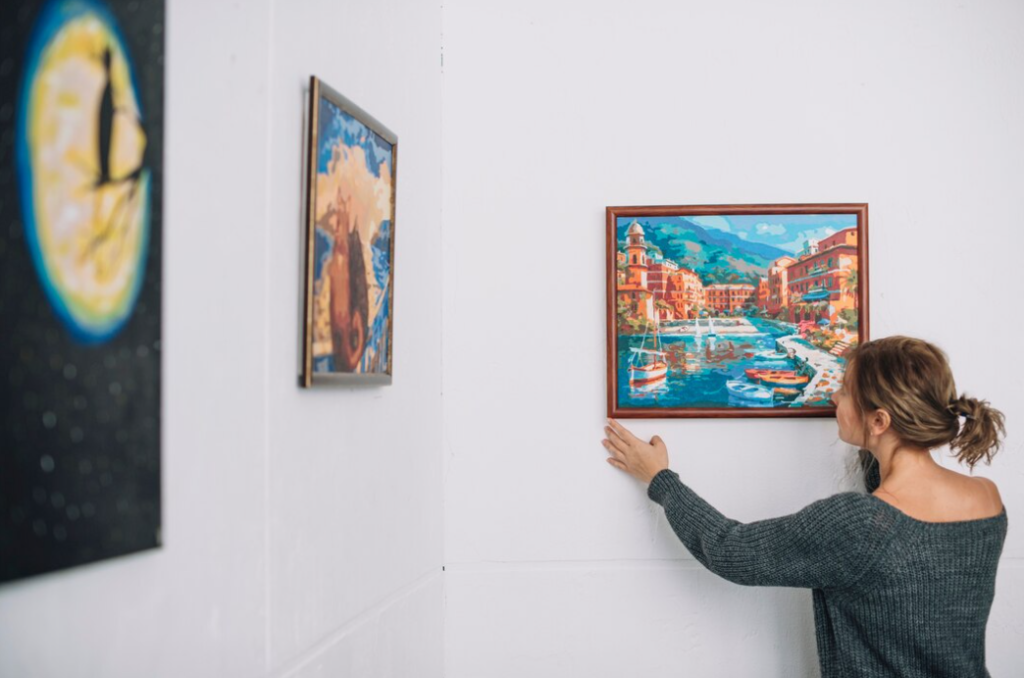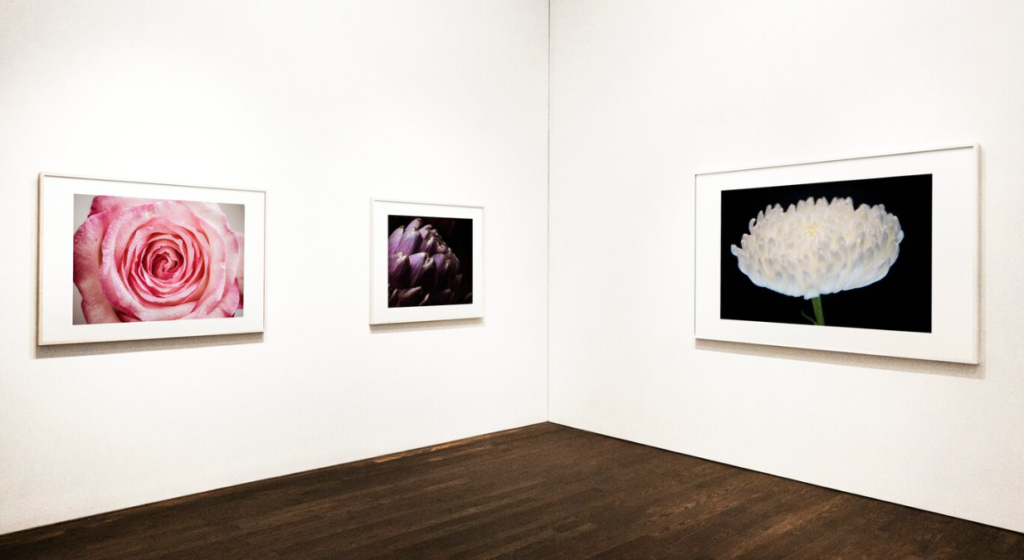To garner attention and recognition in the dynamic art world, it is imperative to understand the intricacies of submitting your artwork to a gallery. Effectively presenting your creative masterpieces to galleries entails employing a variety of strategies to ensure that your work not only gets noticed but also stands out amidst the multitude of submissions. Below, we explore several approaches to engaging with galleries and elevating the visibility of your artistic endeavors.
Virtual Competitions: Showcasing Your Talent Online
In the realm of art competitions, whether conducted online or in physical spaces, a thoughtful approach is key to gaining recognition for your work. Here’s a comprehensive guide to help you make your mark in the art world:
First and foremost, define the type of artwork you wish to present to galleries. Typically, artists initiate the submission process through an online submission form. Once your submission is received, the gallery will reach out to schedule a meeting for a more in-depth discussion about your work. While artists often use software like Word to compose submission forms, utilizing a cloud-based service to handle larger files is also an option. Regardless of the platform, include essential details such as your name, art title, and your preferred submission date.
- Begin by ensuring your portfolio is not only up-to-date but also an accurate reflection of your current artistic practice. While some galleries may prefer physical portfolios, you can alternatively send a thumb drive with images or share a digital folder. It’s advisable to include a minimum of ten to twenty recent pieces of your work, adhering closely to submission guidelines to avoid any risk of rejection;
- Furthermore, acquaint yourself with the specific policies and preferences of the gallery you intend to submit to, as some may have stringent criteria and could reject submissions without providing explanations;
- Moving forward, actively seek out both online and offline art competitions to promote your work. Look for competitions that offer free entry or feature enticing cash prizes. In preparation, craft a compelling elevator pitch that encapsulates your key selling points in thirty seconds or less;
- Utilizing platforms like the Format Prints Marketplace can be instrumental in this regard. Once you’ve established the criteria, narrow down your target galleries and learn about their staff to tailor your submissions accordingly. Maintain diligent tracking of deadlines and guidelines to maximize your chances of gallery selection.
Beyond the submission process, focus on building a lasting relationship with the gallery of your choice. Enroll in their mailing list, participate in gallery events, and engage with their social media presence. The aim is to become a recognizable presence within the artistic community. Invite friends and acquaintances to join you in these efforts and introduce yourself to the gallery staff. Take the opportunity to personally connect with the gallery director and express your appreciation for their artistic contributions.
Cultivating a Partnership with an Art Gallery

When submitting your artwork, it’s not just about making a one-time transaction; it’s about nurturing a meaningful relationship with the gallery of your choice. Here are some effective strategies to foster a successful gallery partnership:
- Online Presence: Enhance your online presence by mentioning and linking to the gallery on your own website. This not only builds your credibility but also attracts potential art enthusiasts and customers;
- Promote and Sell: Taking responsibility for promoting your art and making sales is an essential part of the relationship. Be proactive in showcasing your work and engaging with potential buyers;
- Gallery Engagement: Attend gallery-hosted events to immerse yourself in the art community and introduce yourself to the gallery director. Familiarize yourself with the gallery’s website and social media to connect with fellow artists who are already active there. Express your enthusiasm for art and establish yourself as an art enthusiast;
- Director Connection: Once you’ve garnered the director’s attention and established rapport, consider approaching them about submitting your artwork. Over time, you can cultivate a genuine appreciation for each other’s work, and the gallery director may become a fan of your creations;
- Reciprocity: Building a gallery relationship is a two-way street. Be responsive and attentive to the gallery’s needs. Your assistance not only benefits the gallery but also increases your chances of being featured in their exhibitions and publications. Expect that a reputable gallery will reciprocate your support;
- Research and Relevance: Before approaching a gallery, thoroughly research their preferences and requirements. Galleries are seasoned professionals who understand their niche. Attend gallery events and join their mailing list to gain insights into their specific needs. Avoid submitting your art to a gallery that doesn’t align with your style or focus. Persistence is key, but ensure your submissions are a good fit;
- Long-Term Perspective: While honesty and transparency are crucial, building a long-term relationship with a gallery is about trust and mutual respect, not exploitation. Your art benefits from this collaborative partnership. Trust and professionalism will form the bedrock of your success, both artistically and within the gallery community.
Crafting Your Portfolio Website with Ease
Creating a portfolio website for showcasing your art need not be a daunting task. While numerous website builders are available, Weebly stands out as an exceptionally user-friendly option. It’s both free and intuitive, making it accessible even to those without programming expertise. The key to a successful art submission website is its ability to prominently display your work and captivate visitors’ attention.
An artist’s portfolio website serves as a virtual art gallery, offering a convenient repository for all your creations. This digital showcase enables potential buyers to peruse their favorite pieces and gain insight into your creative process. A well-designed website has the potential to attract viewers, leading to sales, sponsorship opportunities, and collaborations. When crafting your portfolio website, ensure it features only your finest work. Include a minimum of fifteen captivating pieces that highlight your versatility across various mediums and themes.
To embark on the creation of your portfolio website, begin by gathering comprehensive information. Share details about your artistic influences, educational background, and the themes that resonate with you. If possible, offer insights into your artistic interests, allowing potential viewers to connect with you on a personal level. In the digital age, the internet provides an invaluable platform for artists to reach a wide audience, and a website is the ideal tool for promoting your work.
Once you’ve compiled your artwork, invest in high-quality photography. If you lack the skills for photography, consider enlisting a professional to capture your pieces. Pay meticulous attention to lighting and glare to ensure the best possible representation of your art. Scanning your artwork, when applicable, enables you to input it into design software like InDesign. Additionally, remember to include your bio and resume to provide a comprehensive view of your artistic journey.
Your portfolio website can also serve as a valuable tool for promoting your work and attracting new clients. Utilize it as an online artist newsletter or a platform for sharing your creations on social media. This not only saves you time but also elevates your professional image. By consolidating all necessary information about your art into one accessible page, you can create a compelling portfolio website in mere minutes, leaving a lasting impression on potential buyers.
Staying Ahead in the Art Market

Artists have two primary approaches when it comes to engaging with art galleries: the “cold” approach and the “warm” approach. In the former, artists make phone calls to arrange appointments, while in the latter, they initiate contact by sending emails to gallery owners to request a meeting. These introductory emails should encompass a concise biography, an artist statement, a CV detailing your artistic journey, and any noteworthy press mentions. Additionally, artists can explore opportunities to monetize their websites by selling prints, offering an appealing alternative to traditional gallery submissions.
The subsequent crucial step is cultivating personal relationships with art gallery directors. Active participation in art-related events and fostering social connections within the art community is essential. It’s important to approach this process with tact, avoiding the imposition of your presence as an artist when not explicitly invited. Simply being a visible and engaged presence increases the likelihood of receiving invitations to exhibit at galleries. However, bear in mind that art galleries often do not publicly announce their calls for artists, making it vital to establish rapport with directors and attend gallery openings to stay on their radar.
For those who are newcomers to the art market, subscribing to “Art News Alert,” a free email newsletter offering breaking news, interviews, and insightful critical perspectives, can be immensely valuable. Remaining subscribed allows you to stay informed about the latest trends and opportunities that could prove fortuitous for your work. Given the ever-evolving nature of the art market, staying up-to-date is paramount.
Above all, artists should exercise vigilance to avoid exploitation when submitting artwork to art galleries. Unfortunately, the art world is not immune to unscrupulous gallery owners, so maintaining a vigilant stance is crucial. The ultimate success of selling artwork hinges on various factors, including the quality of the art itself, the gallery’s marketing prowess, and the preferences of art buyers. Being well-prepared to address these aspects with clarity is essential, ensuring that your art thrives in an environment that values your talent and dedication.
Conclusion
In this comprehensive guide on submitting your art to galleries, we’ve covered essential strategies. From crafting your artistic identity and designing a compelling portfolio website to forging valuable gallery relationships and staying attuned to the art market’s shifts, you now have a concise toolkit for success. Remember, it’s not just about submitting your art; it’s about fostering lasting connections, whether virtually or in person, while keeping an eye on market trends. Exercise vigilance to protect your work and reputation, trusting in your talent and the quality of your art. We wish you the best on your journey to achieving your artistic aspirations and leaving a significant mark in the gallery scene.
In your quest for knowledge about art and gallery practices, you may also find it intriguing to explore the art of labeling and its role within a gallery’s exhibition context.



